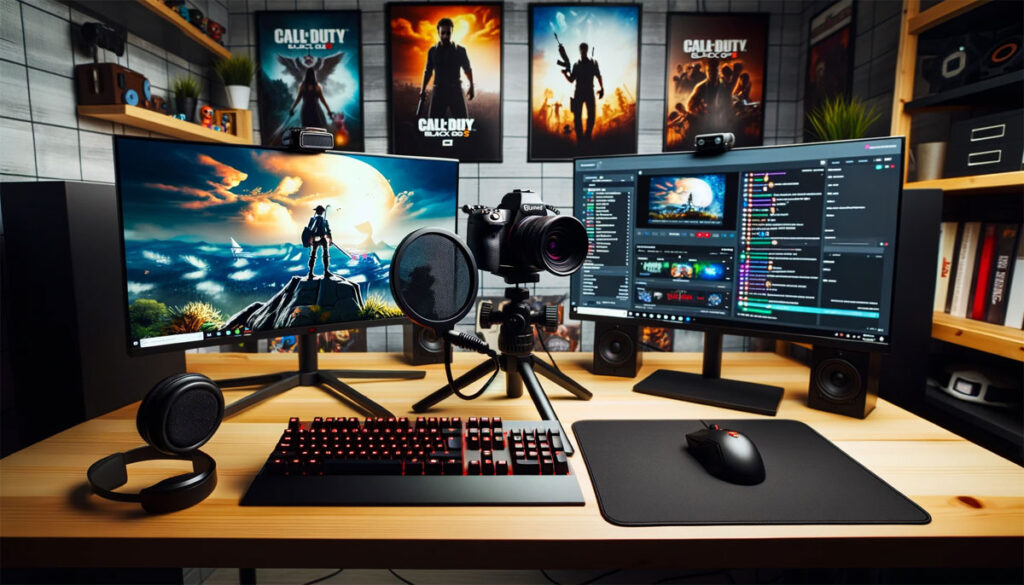Game streaming has rapidly become one of the most popular and lucrative forms of content creation. But what makes streaming games such a winning strategy for monetization?
For starters, the gaming community is vast, diverse, and incredibly passionate. When you’re streaming, you’re tapping into a global audience that is eager to watch, engage, and support their favorite gamers. Think of game streaming as the ultimate “Let’s Play” – it’s not just about showcasing your skills (or epic fails), but also about building a community around your shared love for gaming. And where there’s community, there’s loyalty. Loyal fans often translate to consistent views, subscriptions, donations, and even merchandise sales. Cha-ching!
Another reason is the interactivity of streaming. Unlike uploading pre-recorded gameplay videos, live streaming gives content creators the chance to interact with their audience in real-time. This means instant feedback, answering questions on the fly, and genuinely connecting with your viewers. It’s like hosting a massive LAN party where everyone’s invited.
On average, viewers spend around 18 hours a week watching live streams, signaling a growing preference for this form of entertainment. It’s also a potent marketing weapon. A whopping 80% of consumers would choose live video over blog content, and 92% of marketers deem it crucial to their campaigns. There’s money to be made, and almost anyone can tap into this revenue stream. Here’s what you need to start streaming.

Choosing the Right Streaming Camera
Selecting the perfect streaming camera involves more than just picking the one with the highest number of pixels.
Resolution:
- 720p (HD): Suitable for beginners. While this resolution is becoming somewhat dated, it’s still acceptable for casual streaming.
- 1080p (Full HD): This is the standard for most streamers.
- 4K (Ultra HD): If you’re aiming for top-tier content with crisp visuals, 4K is the way to go.
Frame Rate:
- 30fps: This is the minimum frame rate you’d want. It’s acceptable for talking heads or slower-paced content.
- 60fps: Ideal for gaming streams or any fast-paced content. It delivers smoother video quality.
Low-light Performance:
Look for a camera with good low-light capabilities, especially if you don’t plan to invest in professional lighting right away.
Auto-focus & Light Correction:
- A camera that can automatically adjust its focus based on where you are is essential. It ensures you remain the focal point even if you move around. You’re looking for swift and accurate autofocus.
- Light correction adjusts the video feed based on your environment, ensuring you’re not too washed out or underexposed.
Ensure the camera is compatible with your streaming platform and software. Most modern webcams support popular platforms like OBS, Streamlabs OBS, and XSplit.
Some cameras come with built-in microphones, background removal capabilities, or even facial recognition. Decide which features are essential for your streaming needs.
Choosing the Perfect Microphone for Streaming
The significance of good audio cannot be understated. A professional microphone not only ensures clarity but also adds a layer of professionalism to your content. If you primarily stream from a fixed location, such as a desk or studio setup, standing or shotgun microphones are probably your go-to choice. These mics are designed to capture sound from a specific direction, ensuring that the broadcaster’s voice remains clear and foregrounded, while background noise is minimized.
Streaming Software – The Top Four
OBS Studio (Open Broadcaster Software)

OBS Studio is an open-source streaming and recording platform, known for its comprehensive feature set and adaptability. It’s entirely free, making it a favored choice, especially for those just starting out in the world of streaming. There are a lot of plugins and scripts, allowing users to modify almost every element of their stream. This high degree of customizability, however, means you need to dig deep and learn how to use it properly, potentially making it a bit challenging for noobs. The interface is functional and gets the job done, but it lacks the polish and sleekness found in some other platforms. On the bright side, OBS Studio is available across multiple operating systems, including Windows, macOS, and Linux.
Streamlabs (formerly Streamlabs OBS or SLOBS)
Emerging from the OBS codebase, Streamlabs enhances the user experience by presenting a more user-friendly interface coupled with tools specifically crafted for streamers. One of its standout features is the integrated donation tools, streamlining the monetization process for creators. Streamlabs simplifies the stream personalization process by offering a wide variety of ready-to-use themes and overlays. The platform offers a cloud backup feature. However, Streamlabs is currently exclusive to Windows and it can be more resource-intensive, so you need a powerful PC.
XSplit
XSplit brings to the table two distinct applications tailored to different user needs: XSplit Broadcaster and XSplit Gamecaster. Gamecaster zeroes in on the gaming community, and Broadcaster has a richer feature set suitable for all kinds of streamers. It has an intuitive interface, making it a viable choice for both beginners and seasoned professionals. The software goes the extra mile by offering advanced production tools, such as dynamic scene and source transitions. Another noteworthy feature is the integrated chat and comment system, allowing streamers to view and interact with their audience across various platforms directly within the software interface. XSplit is not entirely free – there’s a free version, but unlocking the full suite of premium features requires a subscription.
Restream
Restream primarily serves as a multi-streaming platform. It gives users the option to simultaneously broadcast their content across multiple platforms, vastly expanding their potential audience reach. One of its standout features is the integrated chat system that consolidates messages from all streaming platforms into one interface, simplifying audience interaction.

Restream offers a unique scheduled streaming feature, where users can pre-record content and set it to broadcast at a later time. There’s a free tier available, but if you want all the features and platforms, you have to get a paid plan. Restream may not offer the same depth of customization tools as other broadcasting software.
